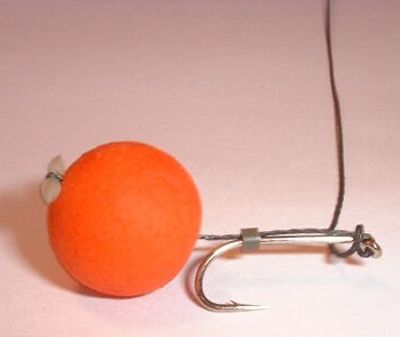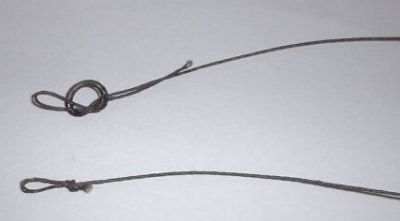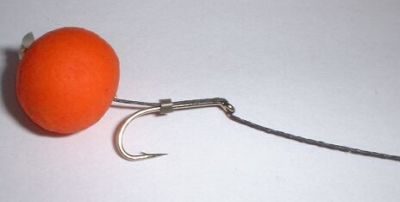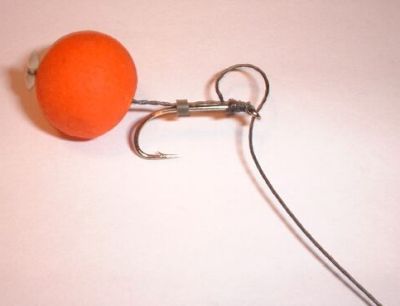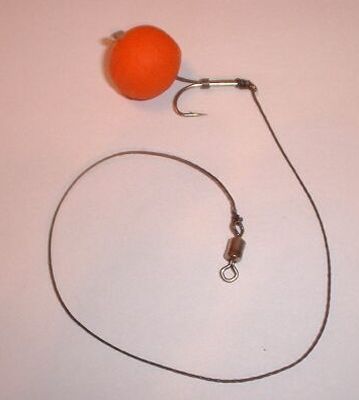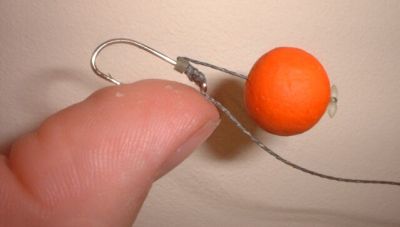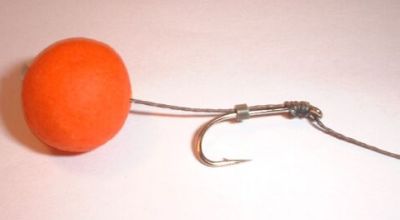I have recently started fishing after a lapse of some 30 years and find the changes in tackle a little confusing, can you please explain to me a hair rig and when and where I should use one. I am carp fishing at present with a minimum of success and would appreciate any help you can give me. I am of mature years though not quite senile. Thank you. Mr C Evans
Can you explain the use of hair rigs. I have seen illustrations in angling magazines but none give any reasons why they are used.
Mr M Buckholt
Can you please show me a knotless knot and how long should the hair be. Thanks,
Mr D Williamson
Question For The Carp Clinic, how do you tie the knotless knot?
Mr P Peters
The modern day Hair-rig was devised by Kevin Maddocks and Len Middleton in the late 70’s. It was while conducting tank tests that they concluded that Carp were actually frightened by the effect of the hook and hooklength passing over their lips.
The way round this was to mount the bait on a very light, supple, two-inch Hair (donated by Kevin’s wife!), which was attached to the lower bend of the hook.
The long supple Hair allowed the Carp to confidently pick up the bait and pass it back to the Pharyngeal teeth without feeling the effect of the hook or hooklength over it’s lips.
The Hair-rig has changed a lot since then in that there is less emphasis being placed on the Carp’s fear of the effect of the hook and hooklength over its lips. Nowadays the emphasis is on the hook being able to turn and find a good hook-hold as the hookbait is being ejected by the Carp.
The easiest and most effective method of producing a Hair-rig is to use the Knotless-knot.
The Knotless Knot
The Knotless-knot is very simple and easy to tie. The knot simply utilizes the hooklength material to firmly tie on the hook and produce the hair of a desired length.
Tieing The Knotless Knot
1. Tie a small loop using an Over-hand knot at one end of your selected hooklength material, I’ve used a 12 inch length of braid in this instance. This loop for your boilie stop to secure the boilie in place.
2. Using a Boilie Needle thread the boilie (or whatever you’re using as a Hookbait) on to what will be the Hair.
3. Once the Boilie has been threaded on to the Hair a Boilie Stop is pushed through the loop to secure the Boilie in place. Thread a small piece of Silicone tubing on to the hooklength and then on to hook, before threading the hooklength through the eye of the hook.
4. Adjust the length of the Hair to your desired length, about 3mm from the end of the hook to the hookbait is my desired length of hair. Whip up the shank of the hook using a minimum of 5 turns.
5. Thread the hooklength once more back through the eye of the hook and pull tight.
6. Tie a swivel on to the end of the hooklength and you’re ready to go!
I always put a small dap of Super Glue / Rig Glue on the knots just for peace of mind, but it isn’t necessary.
Using the Hair-Rig
Once the Hair-rig has been tied, a Boilie or bait of the same size can be used on the same Hair time and time again as the Hair length has been set for that particular size of bait.
The piece of Silicone tubing that I use is to determine the position of where the Hair leaves the Shank of the hook, which is level with the hookpoint. This also allows the hook to turn and the rig to work, in a sense, as an anti-eject ‘Blow-Back’ rig. In other words, once the hook has penetrated the lip of the fish, the fish won’t be able to blow out the bait and hook, just the bait.
Other anglers prefer not to use a small piece of Silicone tubing, but instead whip all of the way up the shank of the hook until they are level with the hook point, which is fine.
Hair Length
In my experience, and whilst discussing Hair length with other anglers, I’ve found that there is no ultimate Hair length, though a gap of between 2mm to 10mm from the bend of the hook to the hookbait is favoured by most.
The same Hair-rig/Knotless-knot, but with a longer Hair.
It’s a case of trial and error in finding a Hair length that works for the size and pattern of hook being used, the size of bait being used, the hooklength material and the way in which the carp are feeding. If you are missing runs or you feel the fish are picking up and successfully ejecting your hook and hookbait then a adjust the length of the Hair, which could make all the difference.
Tight lines,
Gaffer





